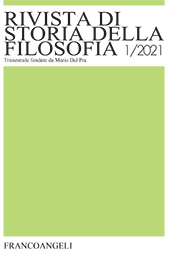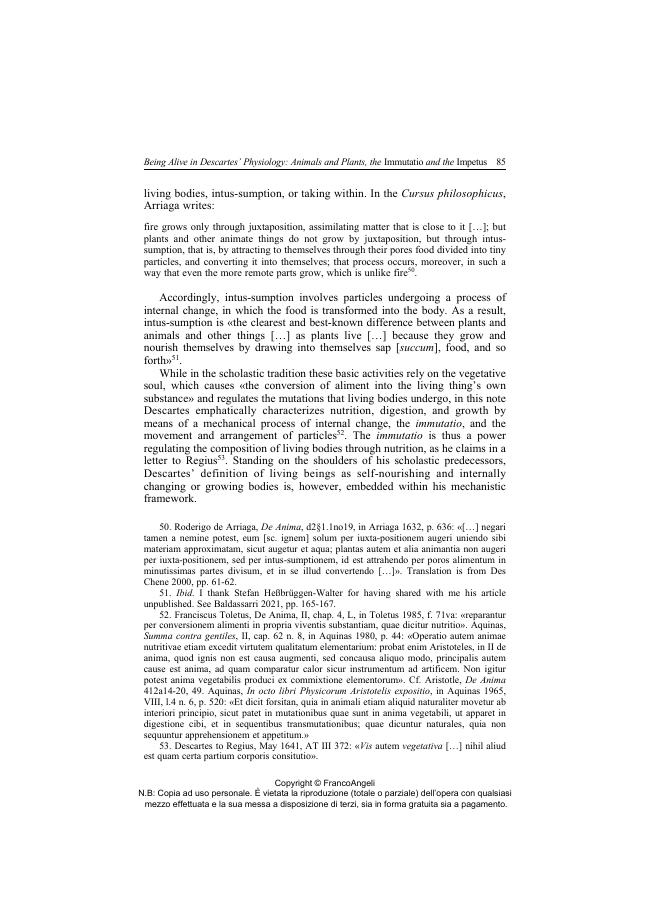Being alive in Descartes' physiology : animals and plants, the immutatio and the impetus
76-94 p.
In René Descartes' works there are four major references to living bodies as objects of his natural philosophy. The first is contained in the Fifth part of the Discours de la Méthode, published in June 1637, where Descartes provides a mechanical explanation of the heartbeat and other living functions of the body. The second is in a biomedical note collected in the Excerpta anatomica dated November 1637, where he discusses nutrition and growth. The third is the famous claim on the absence of a section on living bodies in the Principia philosophiae, published in 1644. The fourth is in La Description du corps humain, Descartes' late physiology likely dated 16471648.
In this article, by exploring these passages and contextualizing his physiological observations of animals and plants, I reassemble Descartes' science of life: his dismissal of soul, his mechanical framework, his interpretation of bodily selfmaintenance and growth, his understanding of living bodies as integrated and organic systems, and the role of a power such as the immutatio and forces such as the impetus. [Publisher's text].
Forma parte de
Rivista di storia della filosofia : LXXVI, 1, 2021-
Artículos del mismo número (disponibles individualmente)
-
Información
Código DOI: 10.3280/SF2021-001004
ISSN: 1972-5558
KEYWORDS
- Descartes, life science, animals, plants, automata, natural philosophy



